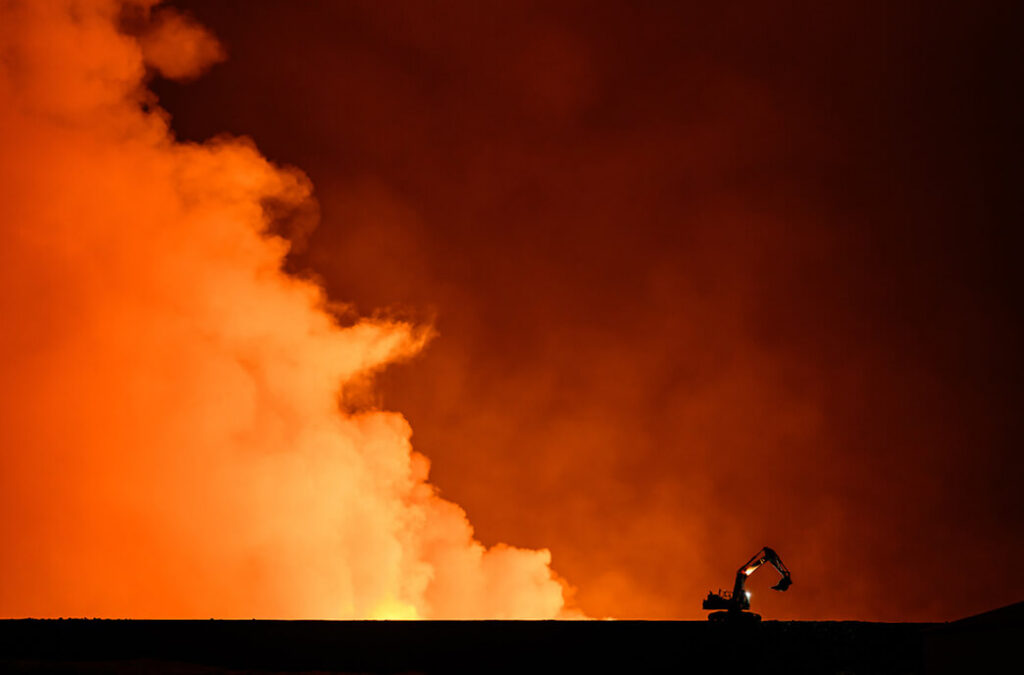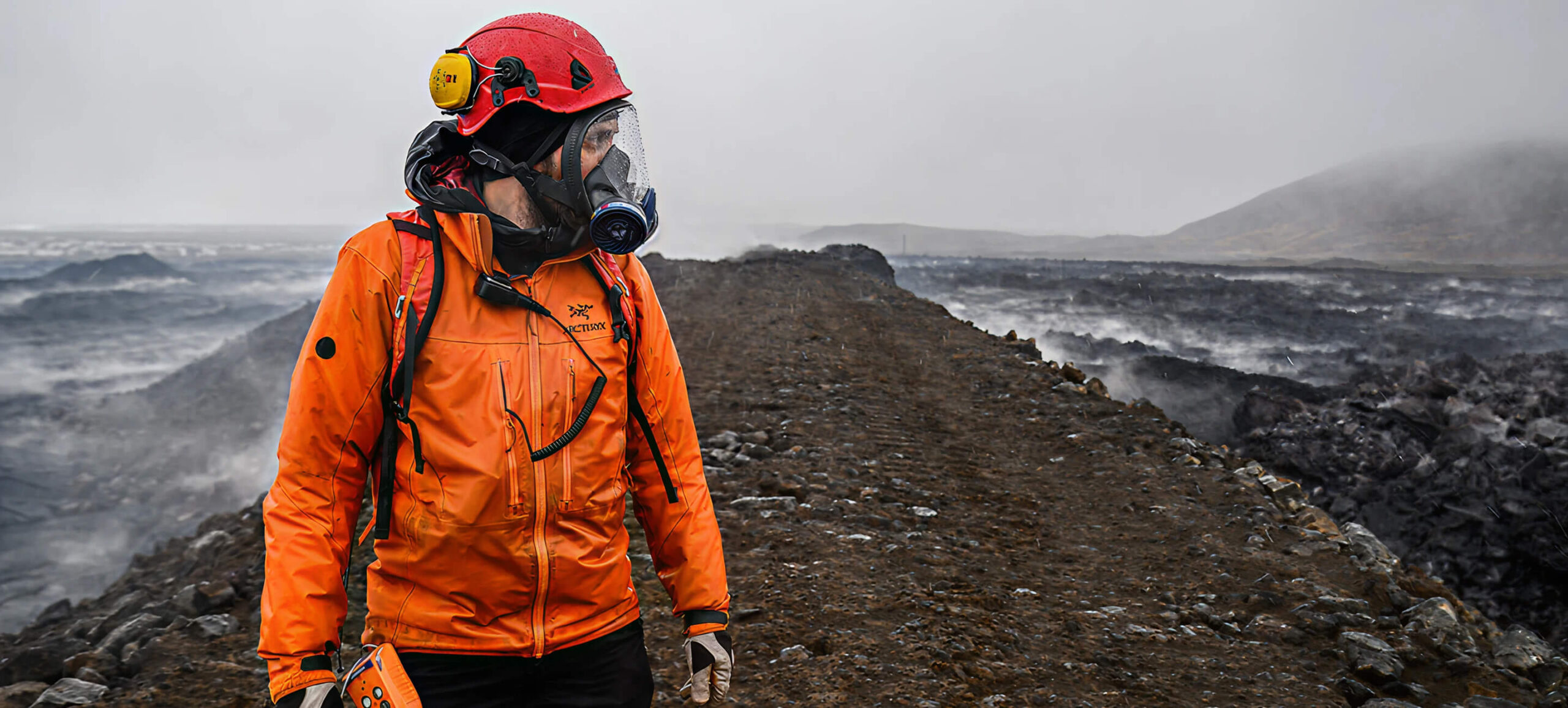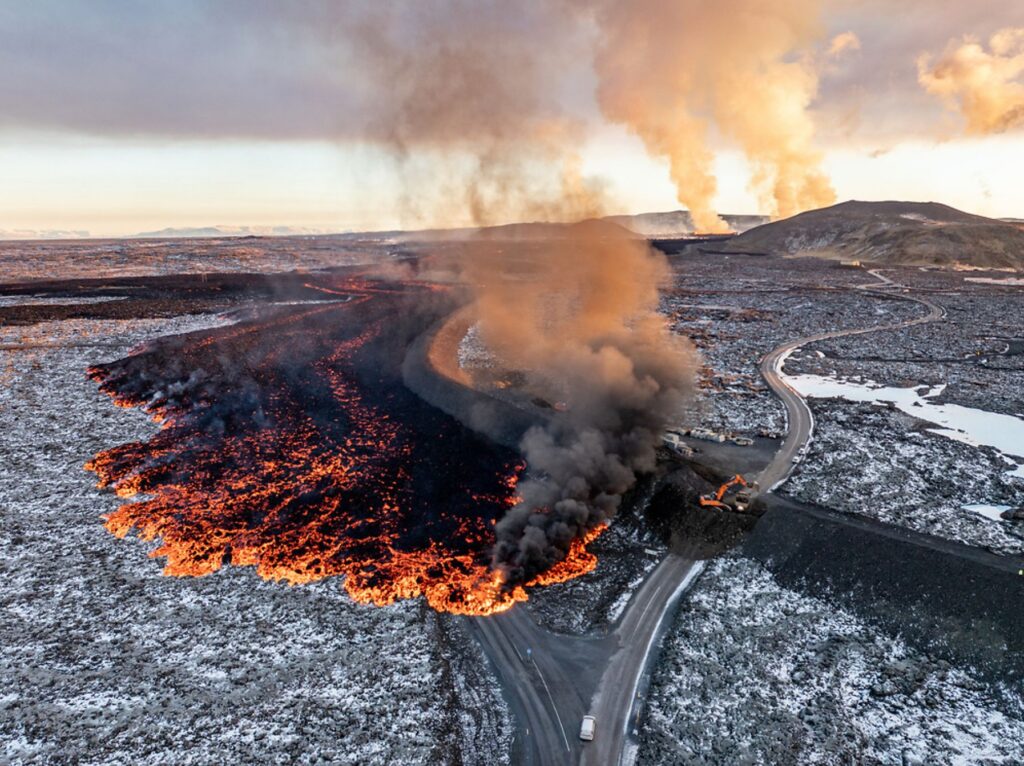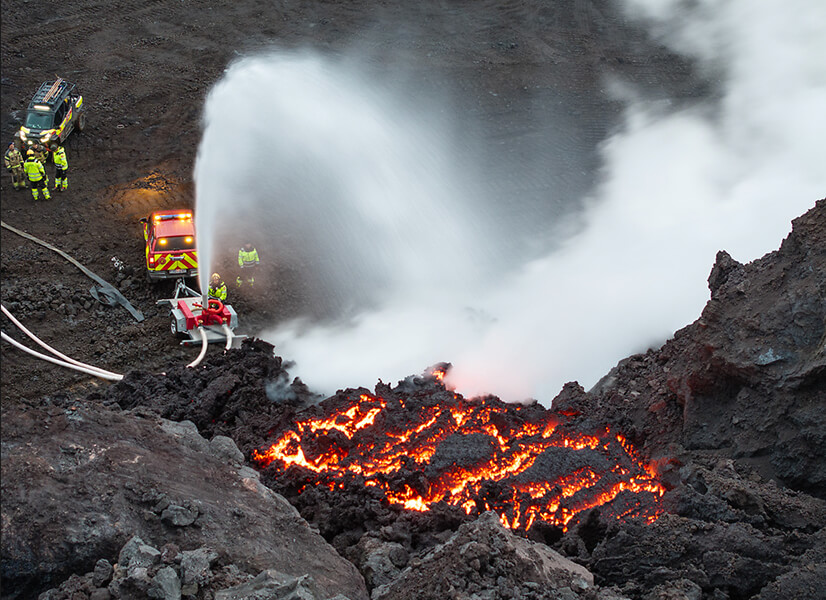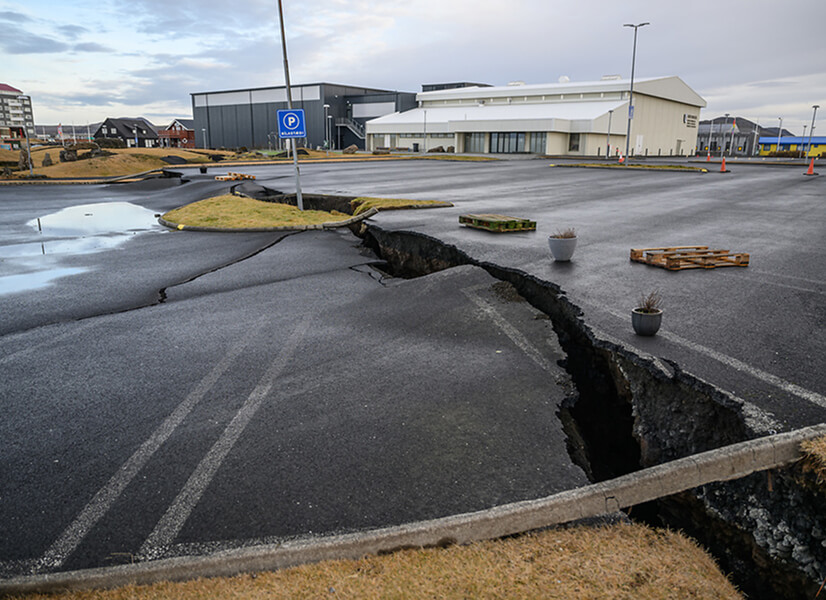These barriers you see aren’t ordinary walls. Built in emergency conditions through the winter months, they represent 2.5 million cubic meters of earth material stretching 13.5 kilometers around the town. To put this in perspective, if you walked their full length, you’d cover 135 football fields.
When lava flows initially cut off roads and crept toward the town, these barriers proved their worth. They diverted much of the molten rock away from homes and critical infrastructure, including the vital Svartsengi power plant that provides power and hot water to much of the region.
The battle didn’t end with barriers. Before you can drive on molten rock, you must first cool it with water, level the hardened surface, add reinforcement material, and test for stability. So engineers laid 38 kilometers of new roads, with 9 kilometers built directly over fresh lava fields.



